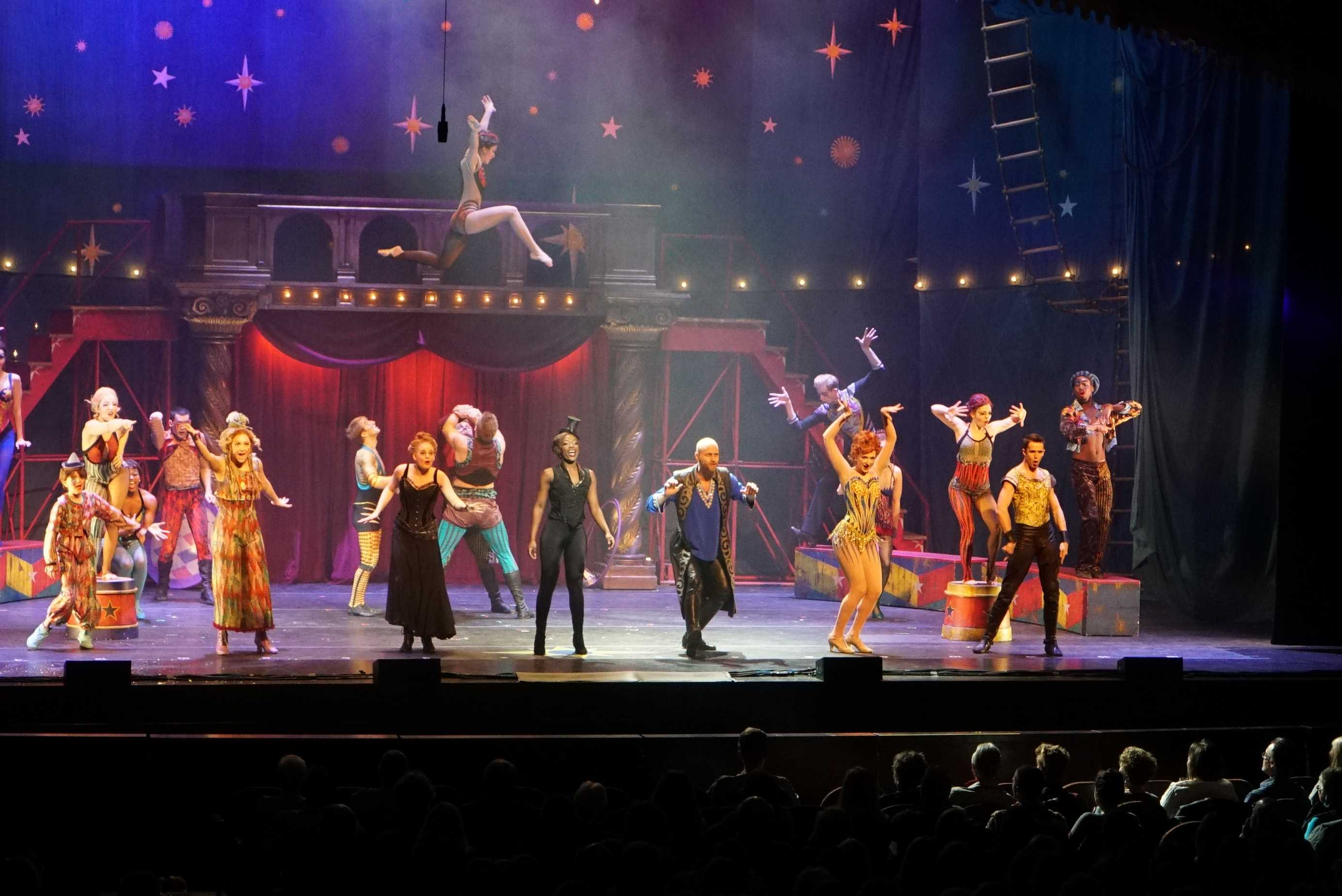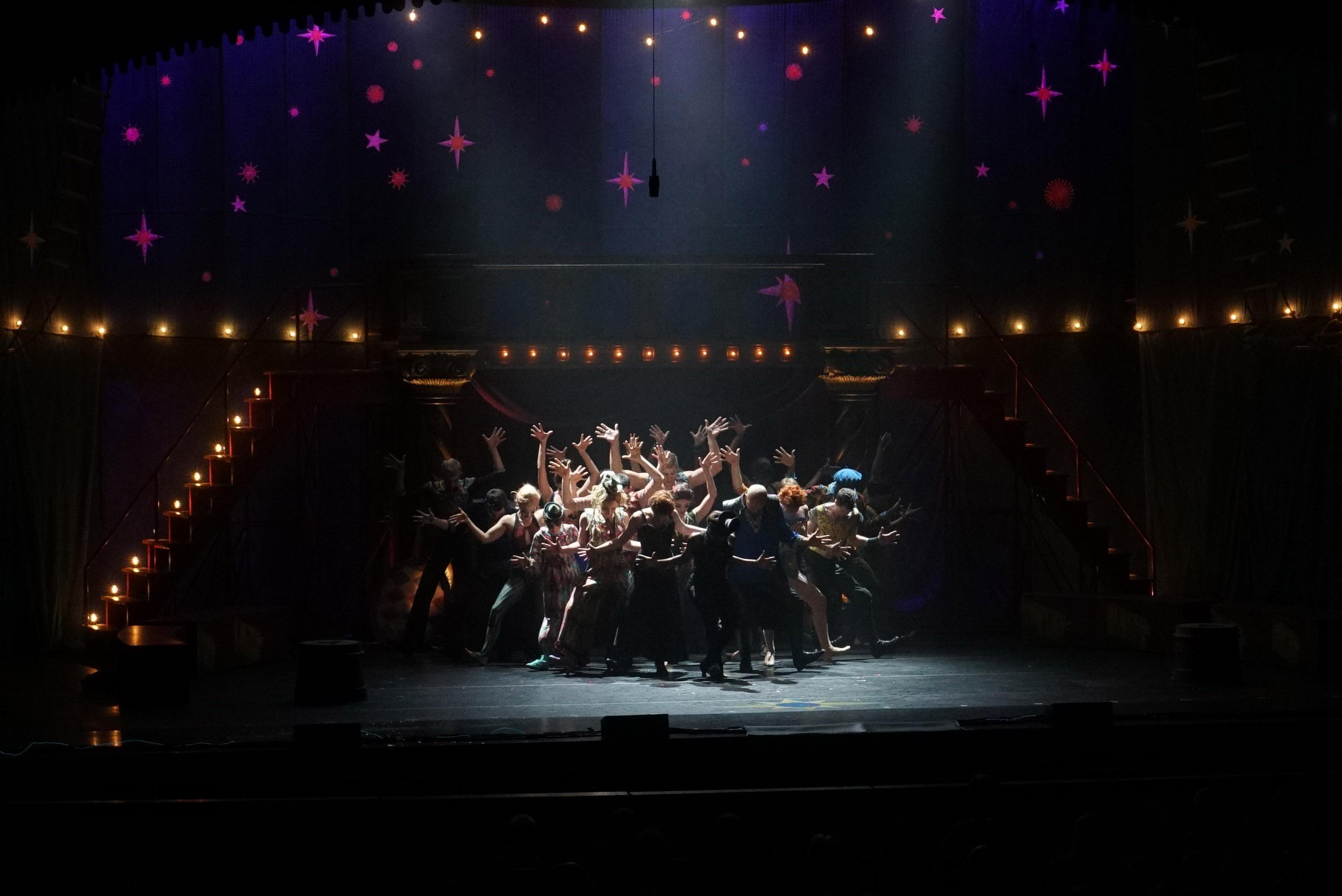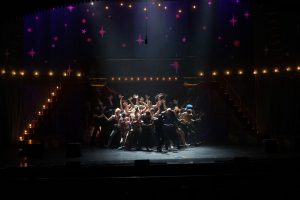Surreal musical brings real emotions
Feb 6, 2017
This past weekend, the Gallagher Bluedorn Performing Arts Center (GBPAC) served as the venue for trapeze artists, orgies, decapitations and giant boxes of fire. In other words, the Tony Award-winning musical “Pippin” came to town!
Although “Pippin” originally debuted on Broadway in 1973, this new revival production first opened in 2013, winning the Tony Award for Best Revival of a Musical that year.
And to put it simply, this new production of “Pippin” was more than deserving of the award. Between the jaw-dropping choreography, dazzling set design and soul-stirring singing, “Pippin” is truly a theatrical experience for the ages.
Now, I would be doing you a disservice in attempting to adequately describe the various intricacies and subplots of “Pippin.” However, when one strips away all the visual spectacle and grandiosity, the story effectively boils down to one young man’s journey of self-discovery.
While this story is certainly a familiar narrative archetype, “Pippin” tells it in such a way that feels wholly fresh and original. The story itself borders on the surreal, as the titular character’s aforementioned journey is directly recounted to the audience by the Leading Player, a character who is in charge of a mysterious performance troupe. As the narrative progresses, the Leading Player continues to break the fourth wall by interacting more and more with the audience.
This surreal approach to narrative is heightened by the anachronistic costumes of the various characters. Although several of the characters are directly inspired by real-life people from the Middle Ages, this intentional use of anachronism calls the musical’s actual time period into question.
By constantly playing with the audience’s perception of history, reality and basic narrative structure, “Pippin” takes much more creative risks than most other musicals.
And fortunately, those risks pay off.
To be sure, this is largely due to the musical’s incredible set design and staging. Whether it was a mock war waged against the Visigoths, an impromptu orgy held inside a giant cage on wheels or a simple farm out in the countryside, the stage in the GBPAC’s Great Hall underwent a seemingly endless number of transformations.
These numerous transformations were brought to life through elaborate lighting, astonishingly colorful backdrops and props and an exquisite musical score.
The musical score and sets were paired with equally effective and powerful performances by the cast. Not only did the cast of “Pippin” deliver show-stopping song and dance numbers, but the acting on display was consistently good to great. While the musical never heavily relied on realism due to its self-aware narrative structure, the performances still carried a relatively high amount of emotional depth – especially during the moving “Finale” in the Second Act.
Now, although all of the main cast put forth outstanding performances – including Naysh Fox’s charming portrayal as the titular character – it was Housso Semon as the unnamed Leading Player who stole the show.
From the outset of the musical, Semon’s character figuratively and literally owned the stage. As the musical opened with her towering silhouette materializing from behind an enormous curtain, it was all too clear that this would be Semon’s show.
Semon injected her Leading Player with an unparalleled sense of charisma, sex appeal, humor and mystery. Words alone cannot do justice to Semon’s equally powerful and beautiful singing, as evidenced by her incomparable ability to belt out the awe-inspiring melody in the song “Glory.” And not only did Semon possess arguably the best singing voice out of the entire supremely talented cast, but she also brought an unmatched physicality and stage presence to all of her dance routines.
There were other standouts from the cast, to be sure – such as Erica Lee Cianciulli’s portrayal as the scheming and sultry Fastrada, a performance that appeared to draw significant inspiration from legendary Broadway singer and actress Bernadette Peters. Brendon Schaefer was equally memorable as the buffoon-like and tyrannical King Charles.
It should also be noted, however, that the cast of “Pippin” exhibited extremely impressive professionalism in the face of even the most alarming unpredictability. During the song “No Time at All” in the 7:30 p.m. performance on Saturday, it appeared that a trapeze bar was supposed to lower for an actor to use to lift himself.
When the bar failed to lower down from the rafters, the actors involved in the scene proceeded to improvise a dance number on the stage. The improvisation here was so effective that the change in the dance routine was nearly imperceptible, allowing the scene to go off without a hitch.
“Pippin” is a theatrical experience unlike any other, thanks in large part to its death defying acrobatics, catchy song and dance numbers and eye-popping set design. The musical’s relatively convoluted plot could have easily fallen into the realm of incoherency, but the surreal atmosphere and fully immersive performances ultimately hold up and support the narrative.
Indeed, by the last note of the final song of the mind-boggling “Finale,” it was all too apparent that “Pippin” had made its case as a musical for the (anachronistic) ages.












